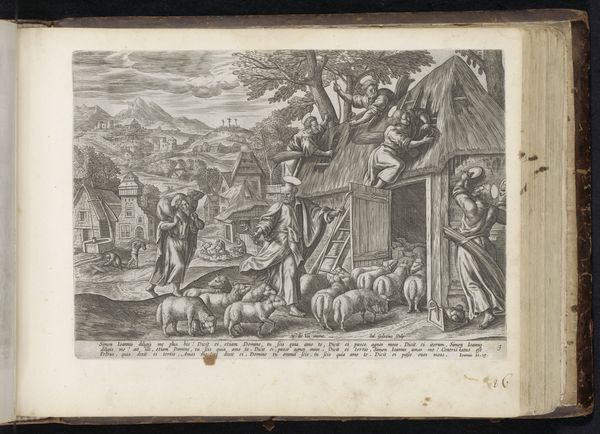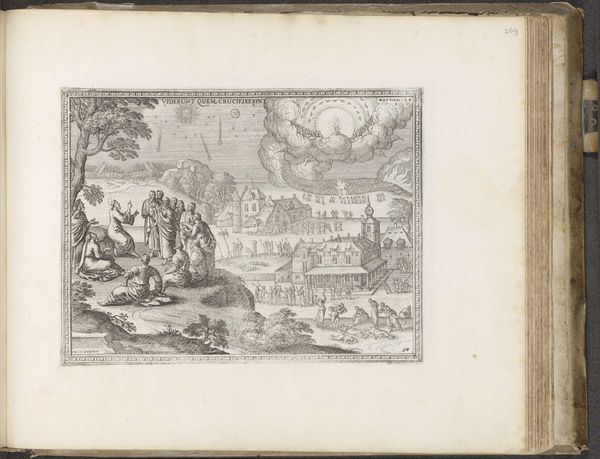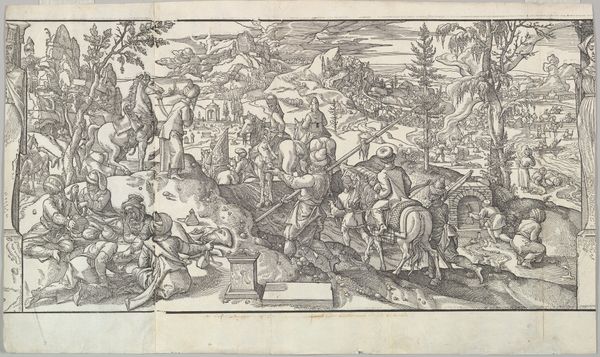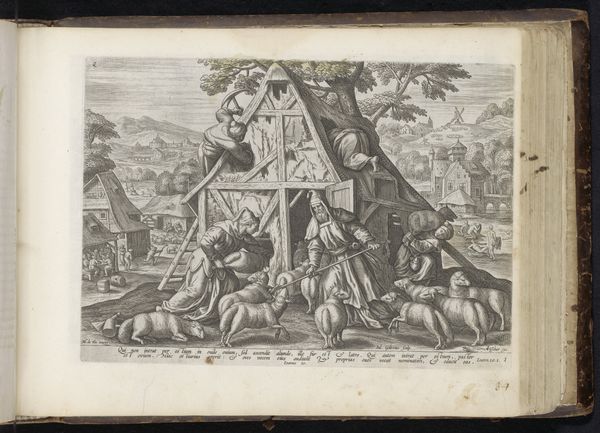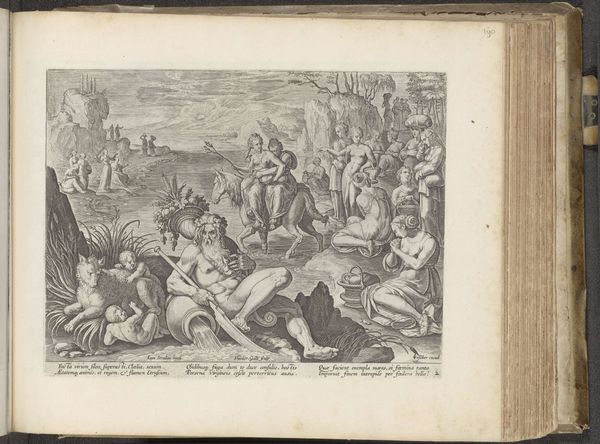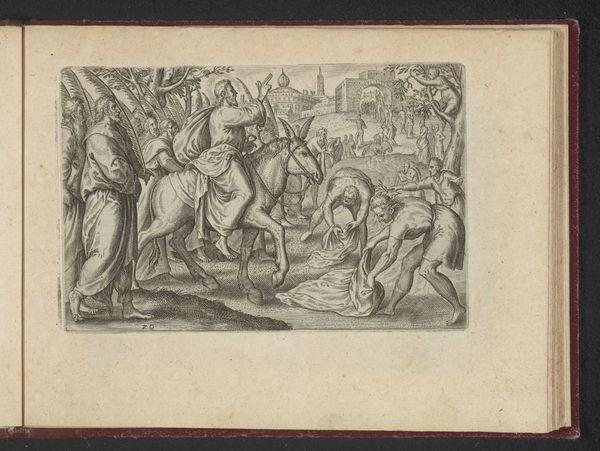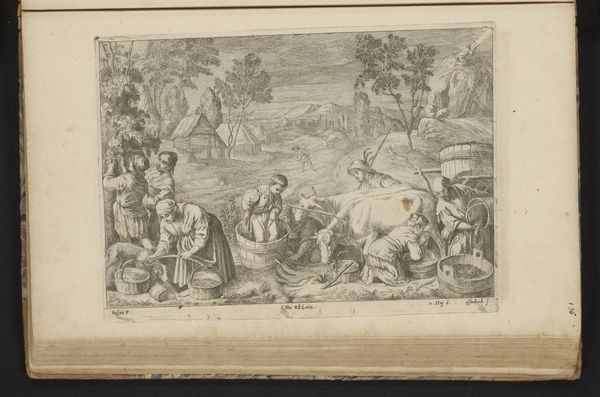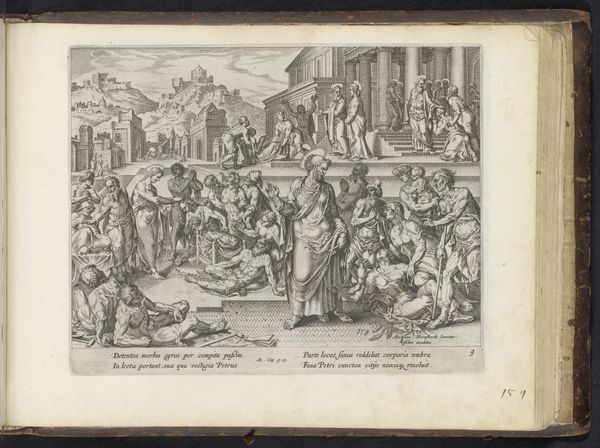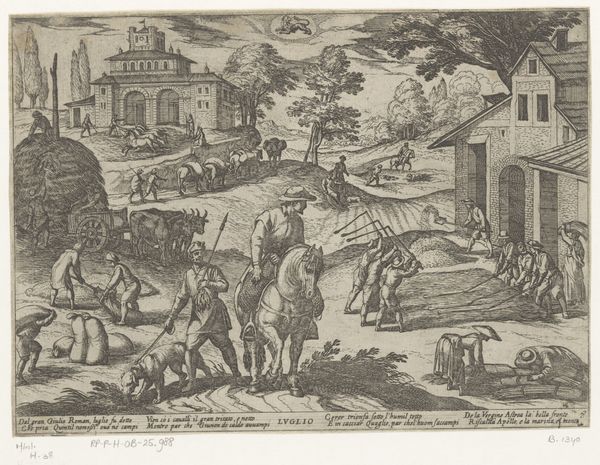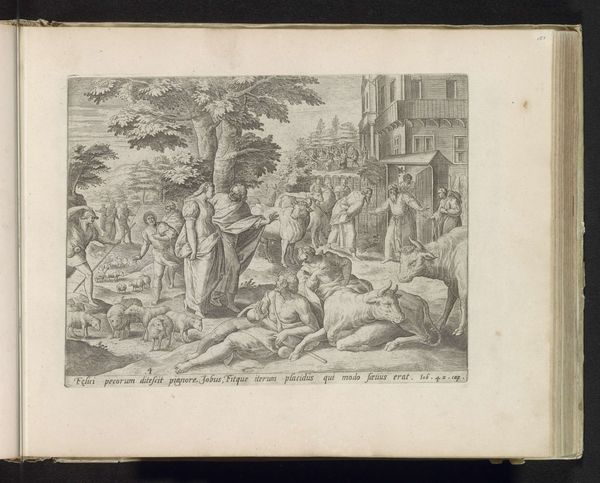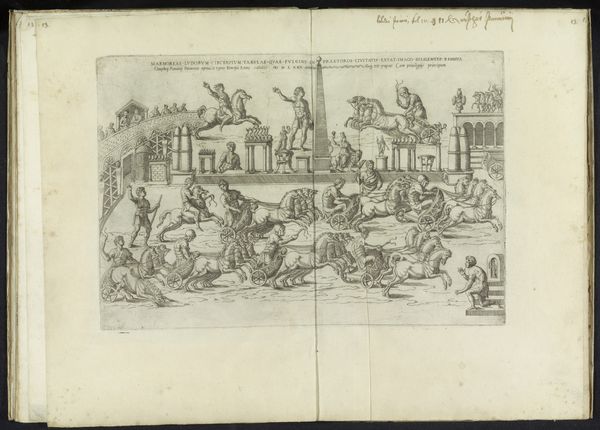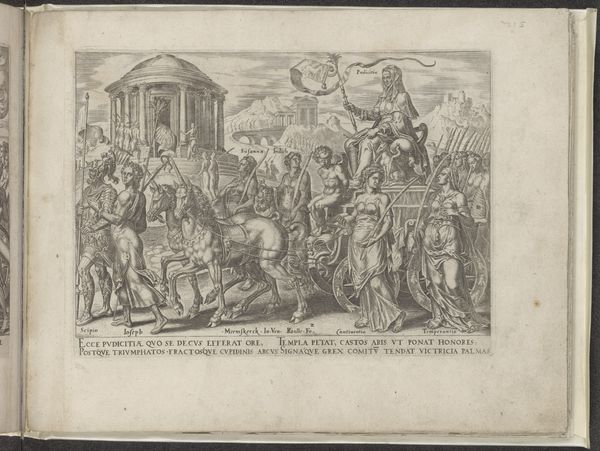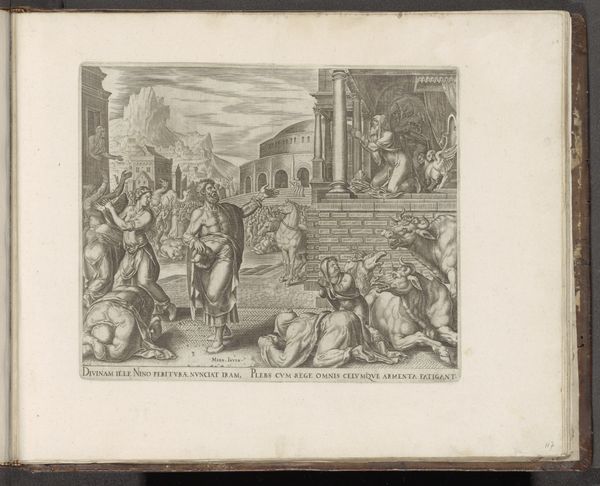
print, engraving
# print
#
landscape
#
figuration
#
coloured pencil
#
genre-painting
#
northern-renaissance
#
engraving
Dimensions: height 207 mm, width 287 mm
Copyright: Rijks Museum: Open Domain
Julius Goltzius made this print, "Christ as the Good Shepherd," sometime before his death in 1595 using the engraving technique. This painstaking process involves using a tool called a burin to carve lines directly into a metal plate, which is then inked and printed. The engraver’s skill is evident in the myriad fine lines that define the image, creating a range of tonal effects. Notice how Goltzius uses the density and direction of these lines to model form and texture, from the soft wool of the sheep to the rough bark of the trees. In its time, printmaking was a relatively democratic art form. Unlike painting, which catered to the wealthy elite, prints could be produced in multiples and distributed widely. This made them an effective means of disseminating information and ideas, including religious narratives such as this one. The labor-intensive nature of engraving also meant that it was a highly skilled craft, requiring years of training to master. The value of the print lies not only in its artistic merit but also in the labor and skill that went into its creation.
Comments
No comments
Be the first to comment and join the conversation on the ultimate creative platform.
